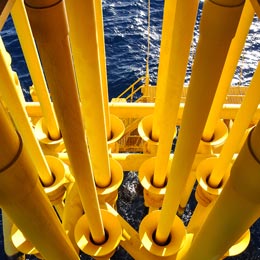
In the following question and answer session, Equipment Finance Advisor drills deeper, in a manner of speaking, into the energy sector with regard to the financing of hydrofracturing (fracking) equipment. Mike Lorusso, Group Head and Managing Director of CIT Corporate Finance - Energy, discusses topics ranging from the complicated dynamic between energy sources derived from fossil fuels and renewable energy sources to the environmental regulations and implications associated with fracking.
Equipment Finance Advisor: As the U.S. continues to move toward achieving its goal for energy independence over the next 10 – 20 years, how significant will the U.S. hydraulic fracturing or fracking industry be to achieving this goal, as compared to wind and solar power?
Mike Lorusso: Fracking for oil and natural gas is extremely important if the U.S. is to achieve its energy independence. While wind and solar supplement that effort, it’s important to understand that they currently contribute less than 5% of the nation’s energy source, and that's strictly in the power generation space. By comparison, natural gas is almost 30% of power generation. Thus, wind and solar are growing in importance but are still a relatively small part of the energy supply mix.

There's not a direct correlation between renewables and fracking. We need both; one is not going to replace the other. It's a complicated dynamic since fossil fuels as energy sources are used for both transportation and power generation, while wind and solar produce only electric power.
Fracking has allowed for the recovery of more natural gas and is encouraging the movement towards natural gas as the fuel of choice for new power generation. In addition, fracking has increased the production of oil in the U.S. by about 10% per year, which is also lessening the need for oil imports.
Equipment Finance Advisor: Will the abundance of tax subsidies available for the development of wind and solar power systems negatively impact the growth potential of the fracking industry where such subsidies do not exist?
Lorusso: The tax subsidies that facilitate the installation of wind and solar facilities do not offset the need for fracking because they are not directly related. The subsidies allow for the advances and installation of wind and solar technologies which have high initial capital costs, but not at the expense of the efforts in fracking. They're not mutually exclusive as far as energy sources. If anything, the combination of more natural gas with renewable fuel makes us less dependent on coal.
Equipment Finance Advisor: How important is it for a lender to clearly understand the environmental and regulatory issues when underwriting an equipment lease/loan for energy companies focused on fracking? How significant are these issues to determining the risk profiles of these borrowers/lessees from an underwriting perspective?
Lorusso: It’s important that we understand the regulatory and environmental issues when it comes to equipment financing. It’s part of our due diligence process when we look at deals. We are averse to taking regulatory risk, and we obviously are averse to financing something that is going to have negative environmental implications. So, we certainly take that into consideration when we're financing equipment in the energy industry. We try to be ahead of the curve and essentially finance something that has taken into consideration any potential negative effects resulting from new legislation, environmental standards or regulatory changes. We work closely with our colleagues in Washington, D.C. which keeps us abreast of pending and proposed legislation.
Equipment Finance Advisor: The technology utilized in the fracking industry is quickly evolving with a number of new innovative technologies now available. How will the equipment collateral values be impacted by these continual advancements in the equipment? Will this present accelerated collateral value risk for equipment being put in place today and over the next few years?
Continued on Page 2...